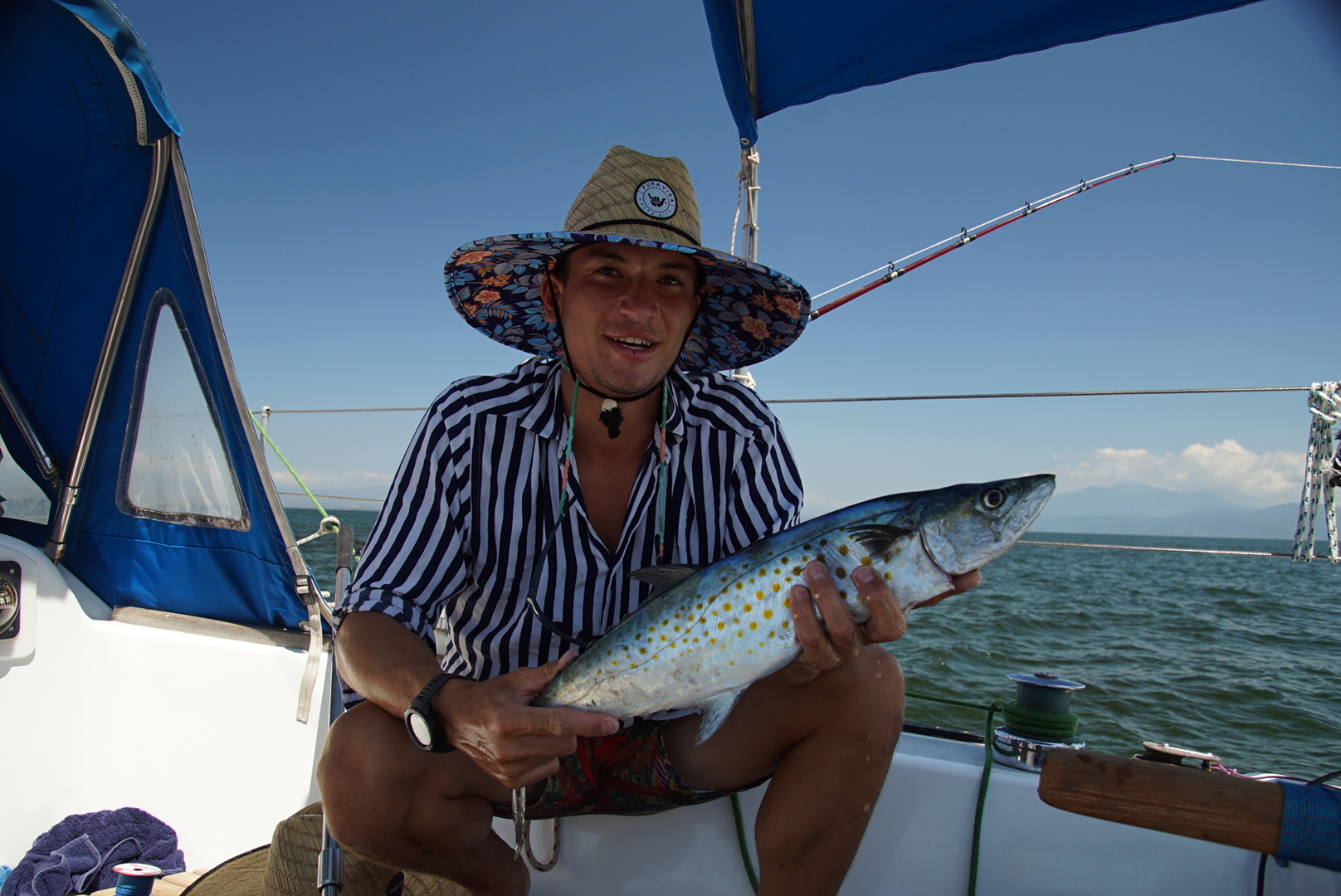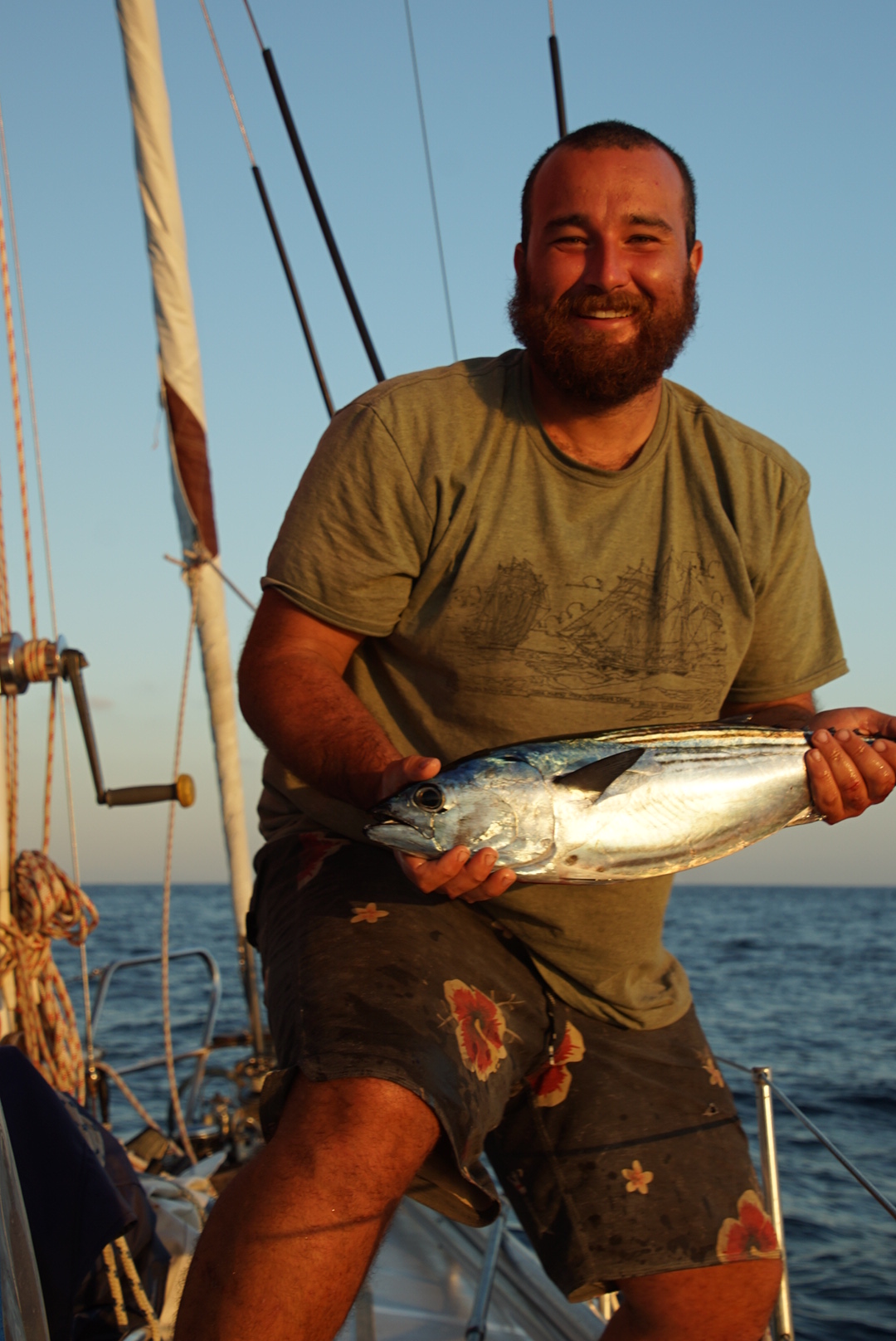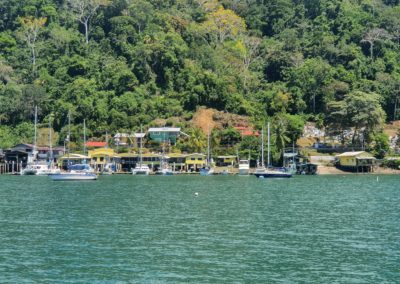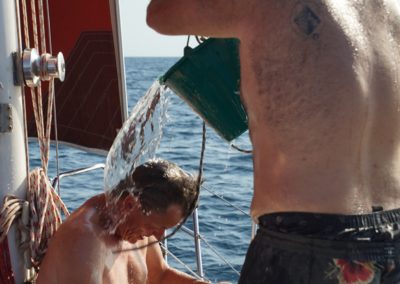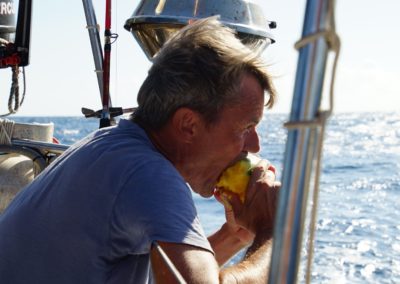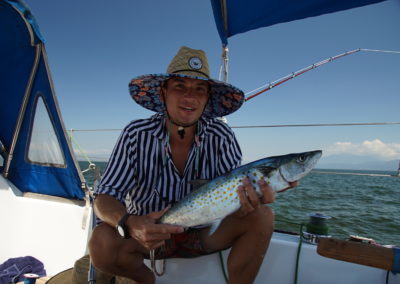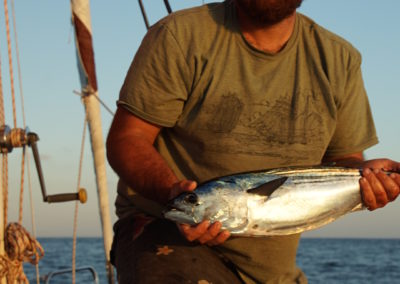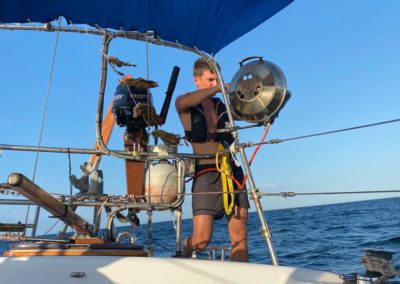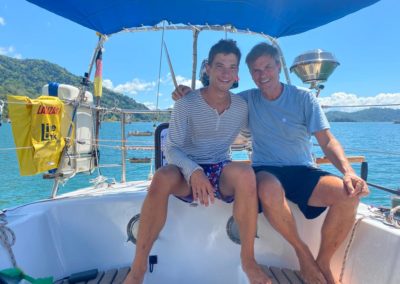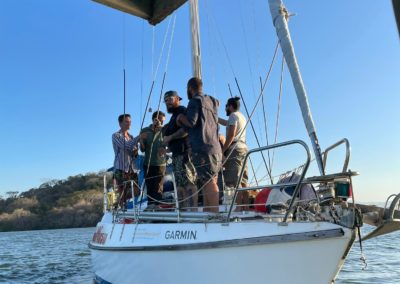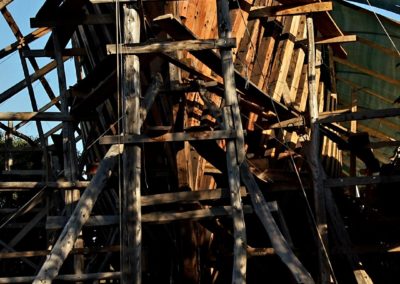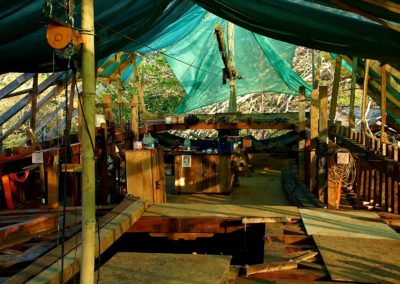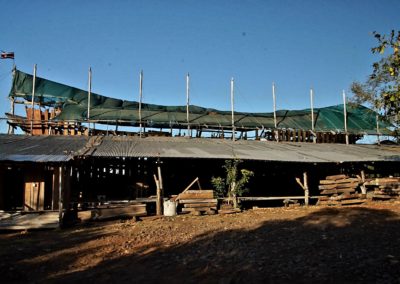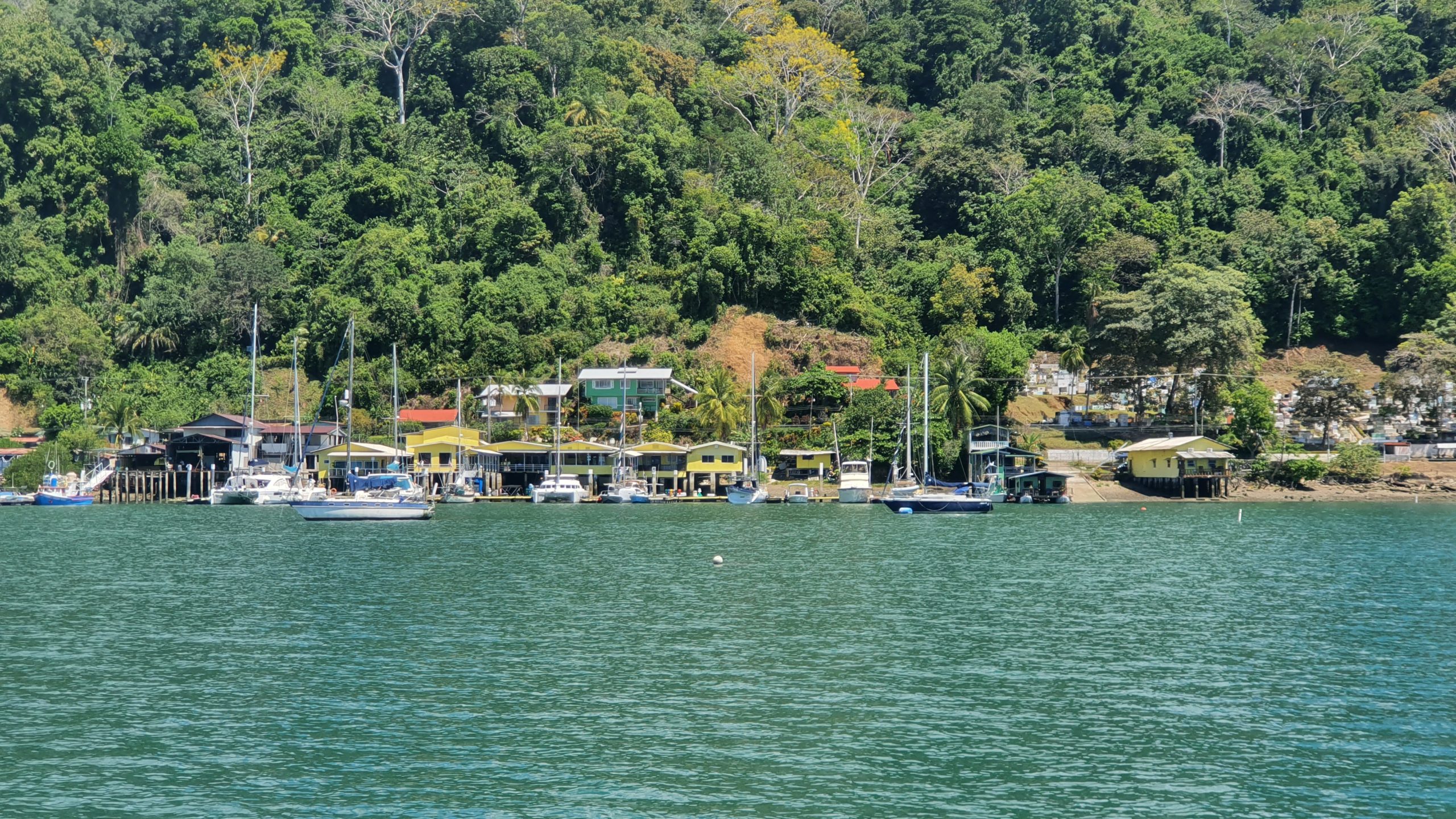
In Panama City we did not stay for a long break. Due to the constant delays, our schedule became very tight. Uli’s return flight from San Jose/ Costa Rica was approaching and Sofien and I wanted to arrive at the Sailcargo Boatyad in northern Costa Rica until the end of the next week.
Arriving in the Pacific on Wednesday, we started prepared everything for the trip north on Thursday. After a few cups of coffee and scrambled eggs we first scrubbed the marks of our accident off the deck and hull and later cleared everything below deck as well.
Ulli and Sofien took a cab into town to get fresh fruit and vegetables from the market, while I headed to the neighboring marina to deal with the clearance.
Once I found the right offices, printed and filled out at least thousand forms, I got the Zarpe (International Clearance Certificate) from the harbormaster and then was able to get our passports stamped at immigration.
The Panama Canal lines and fenders were picked up and by evening we were all back on the boat and ready to go. We left the marina an headed out into the bay and stayed the night there at anchor.
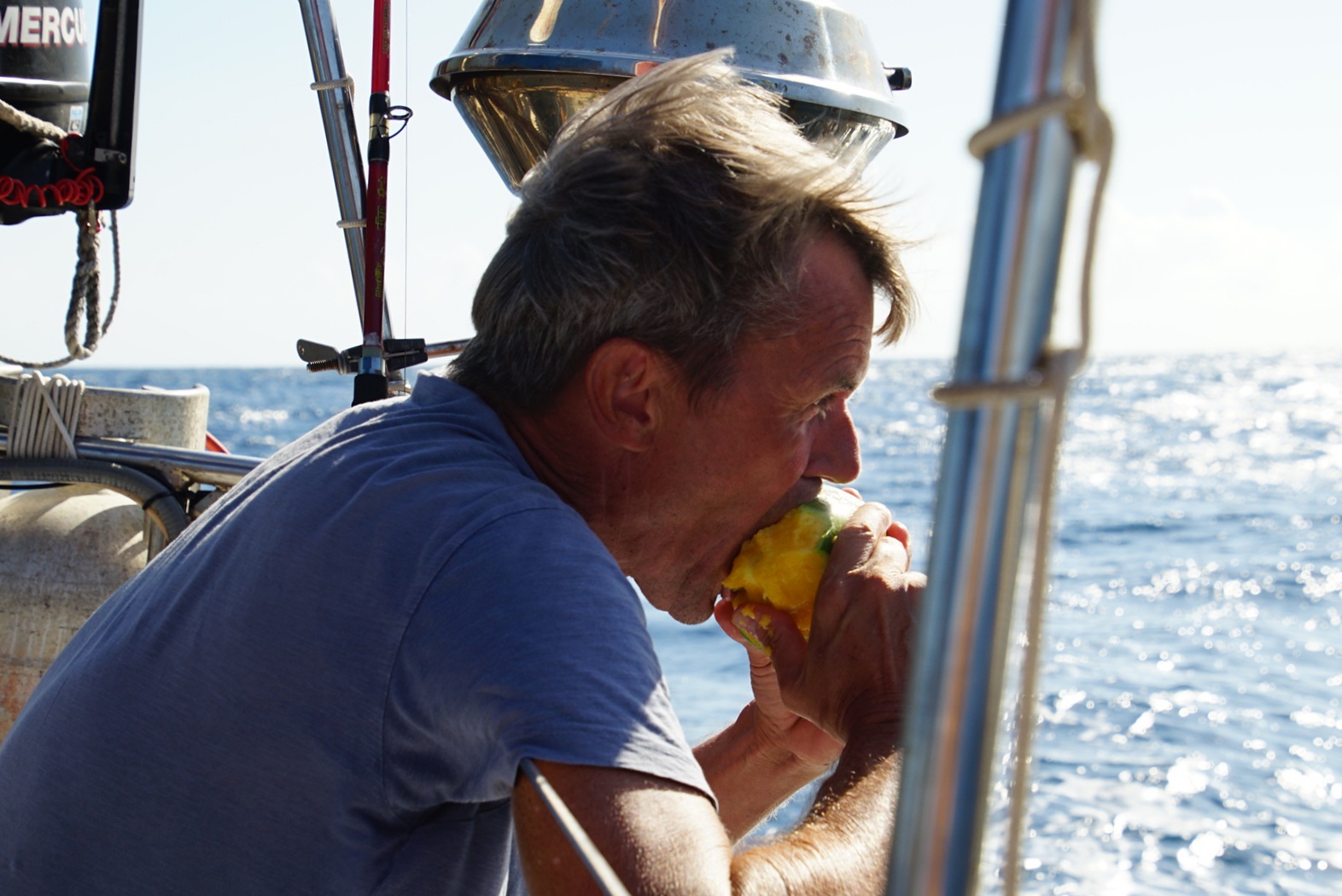
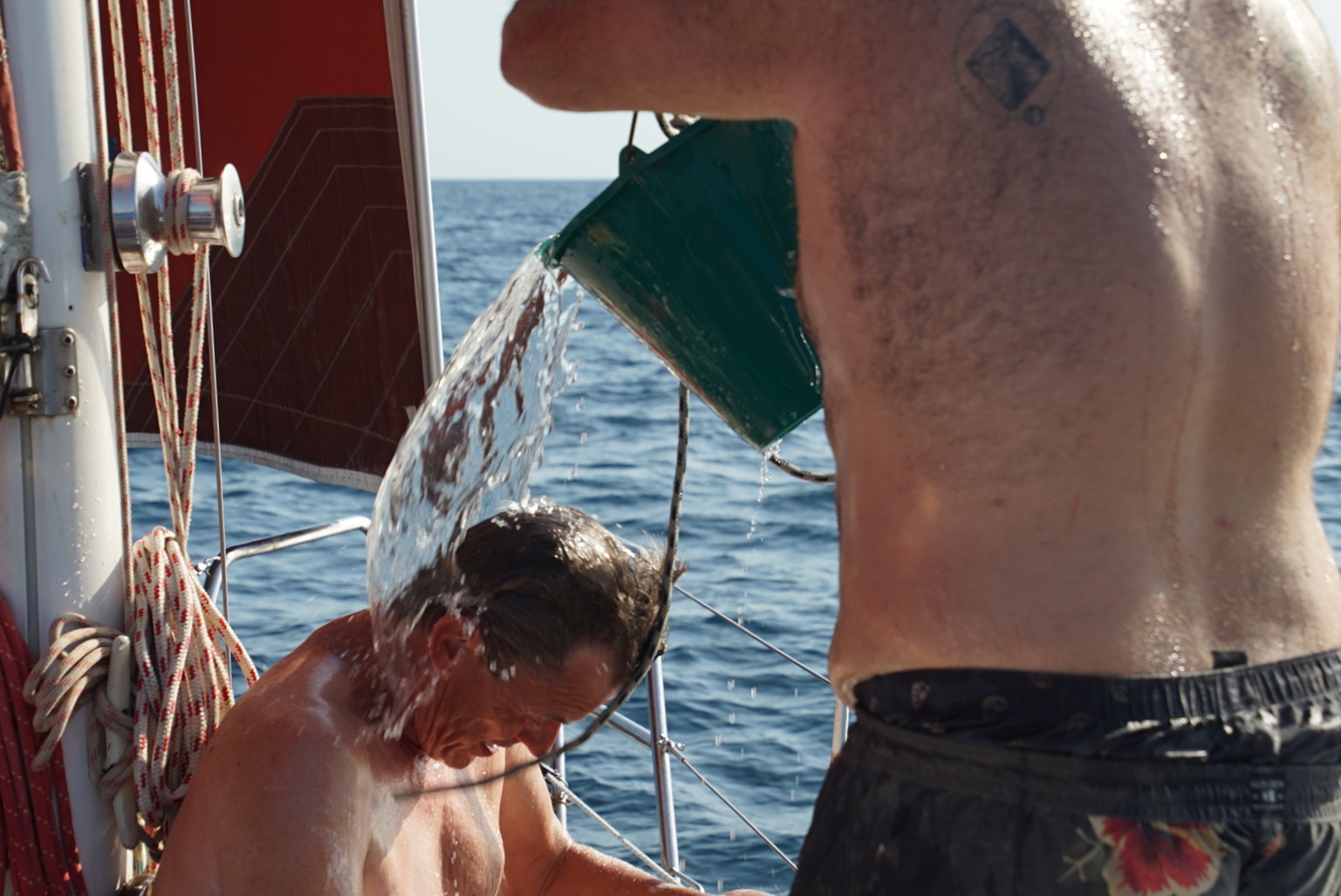
Our first stop on the way north has been Golfito, a small town just above the border of Panama and Costa Rica.
The sail has been beautiful! We caught a good weather window and, contrary to all my worries, were actually able to sail the first two days. Just on the last day, the wind died. When the sails finally hung down like rags on the mast, we started the engine.
As soon as we dropped the hook in front of „Banana Bay Marina“ we immediately inflated the dinghy to drive ashore to have a cold coke. Also, we had to get in contact with our visa agent which we needed in order to deal with immigration. And that had only been possible via Whatsapp and WIFI.
„And remember guys, until the quarantine officer arrived you’re not allowed to leave the boat at all!“.
Mhh, that was good to know, but without the internet we could not really let somebody know about our arrival. But we went back to the boat later the evening and waited there the next day for the officer’s arrival. We had kind of an appointment at nine o’clock, but it turned out to be 11 o’clock and then 12 o’clock without us hearing anything from anyone.
That’s when I decided to drive back ashore to be able to call Cindy, our agent. – The Covid passports have not been accepted by the health ministry. Without connection we were just waiting and waiting and I wonder, if they would have let us drying out there if I wouldn’t had break the rules.
But the best of the story was yet to come:
After I sent Cindy all documents again and then everything turned out to be fine, I could pick up the „Inspector“ at the marina pontoon. He peeked into the boat for about three seconds, asked for a second refrigerator, and stated: „no pork on board“.
Back on shore, when I locked in to the WIFI again, my cell phone rang and the agent called. “There is a problem with the marina”, she said, “but I should just pay them 350 dollars and then everything is fine.”.
„Please what?!“
I’ll explain what happened:
When entering Costa Rica by boat, it has recently become a requirement to have an agent with you arranging the process at immigration. For this I dealt with Cindy before departure, sent her all the documents and negotiated a price for the whole procedure of $300.
The inspector looking for pork must necessarily enter the ship through an official marina, what “Banana Bay Marina” is. But Candy supposedly did not know that the marina charges 350$ for this. Unfortunately, her message came too late, the inspector had already been on the boat and like that I fell into dept.
Anyway, I was not willing to pay a total of 650$. After some long and heated discussions on the phone we (or I) finally came to the conclusion that I would just not pay the agent.
I just really had to keep in mind that I shouldn’t go to far, as we still did not have our passports stamped. In the end what remained was the 350 for the marina, plus 90 for the inspector, plus 70 for the work at immigration.
But, we got our visas by the end of the day.
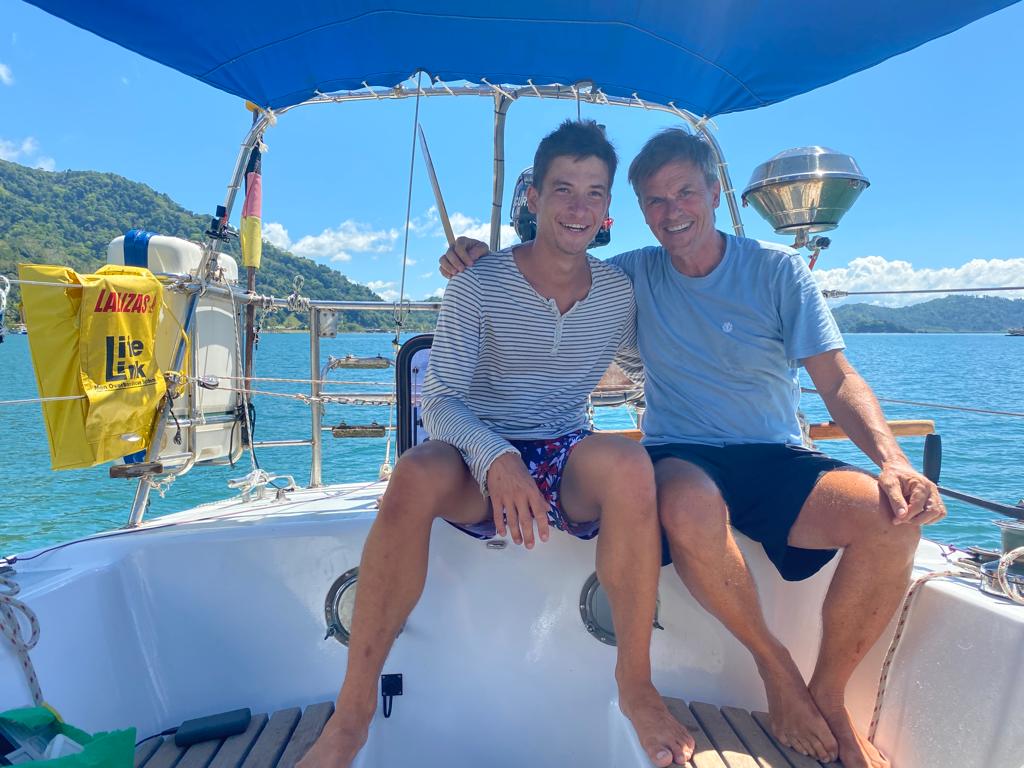
Uli left the next morning to make his way back to Germany and Sofien and I had to go on. We wanted to continue the last 150 miles up the coast. Meanwhile, the good weather window had closed and now the wind blew, sometimes stronger, sometimes weaker from northwest. What meant it came straight onto our noses.
Motor-sailing, we tacked for two nights and one day up the coast towards the Gulf of Nicoya, the entrance to a large bay, where we later arrived at Punta Morales and the Sailcargo Boatyard.
The “Astillero Verde” (Green Shipyard) was the destination of the whole detour to Costa Rica. Here, in the middle of the Jungle, CEIBA, a 45-meter cargo sailboat is being built to prove that economical cargo sailing is possible in a sustainable and environmentally friendly way
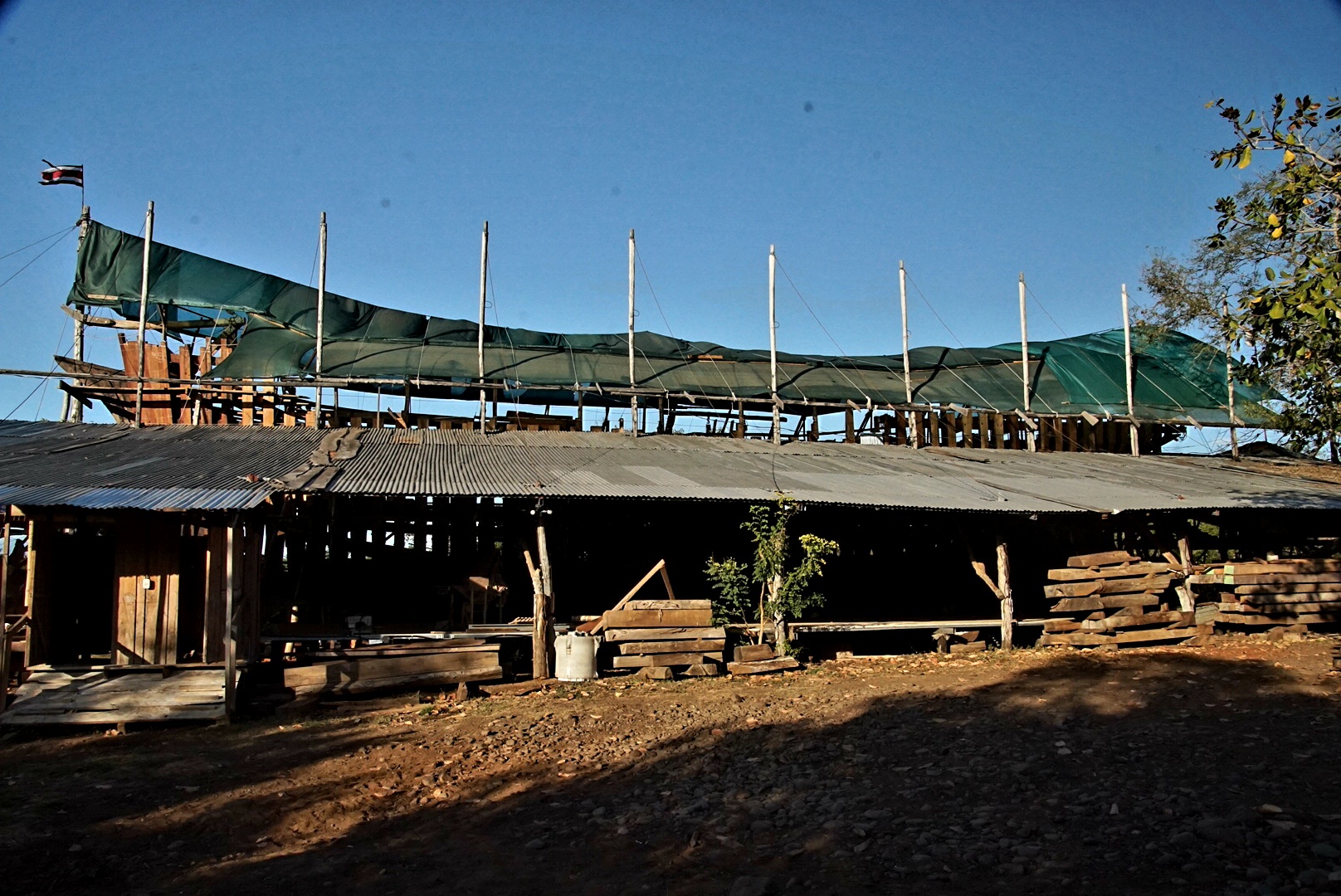
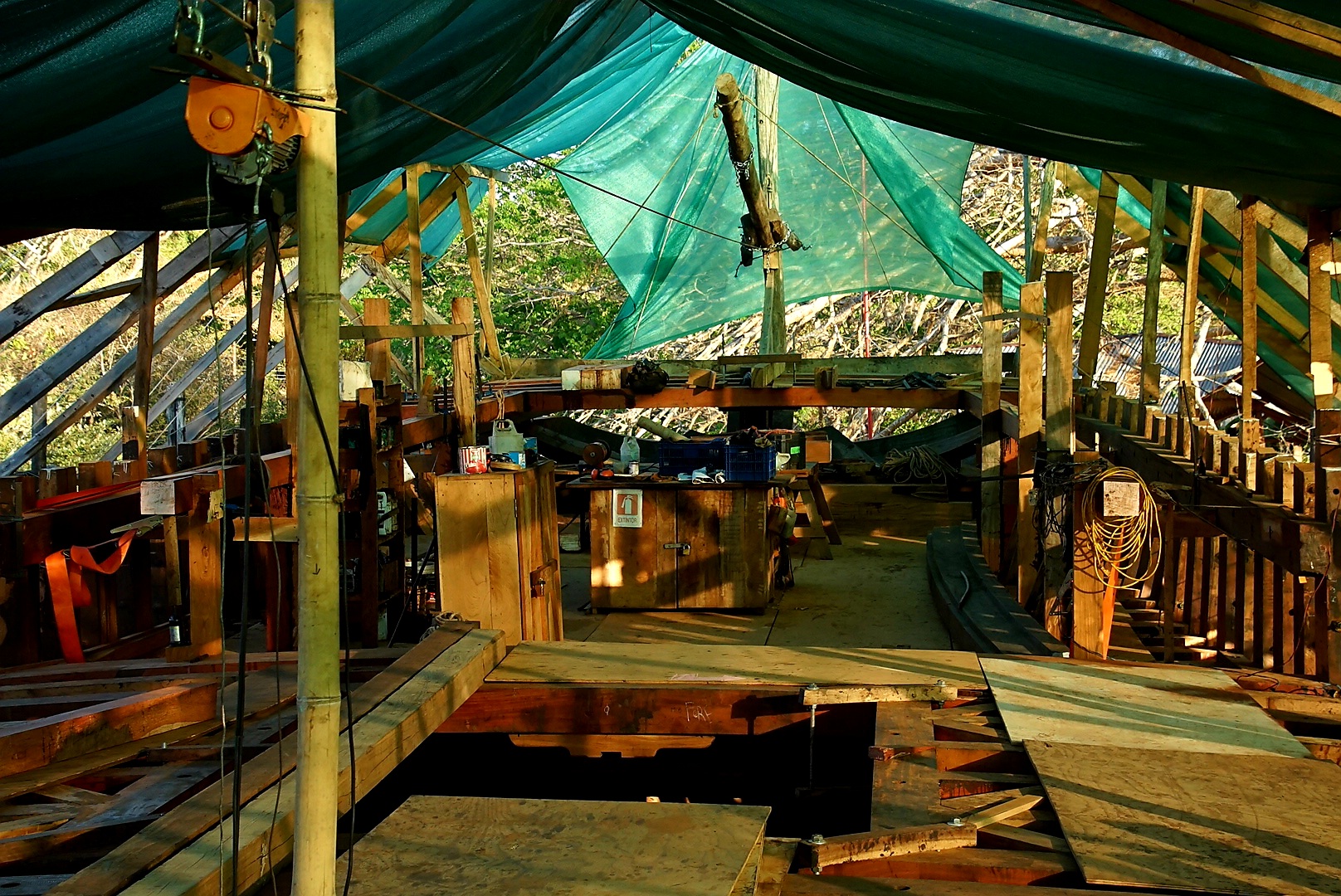
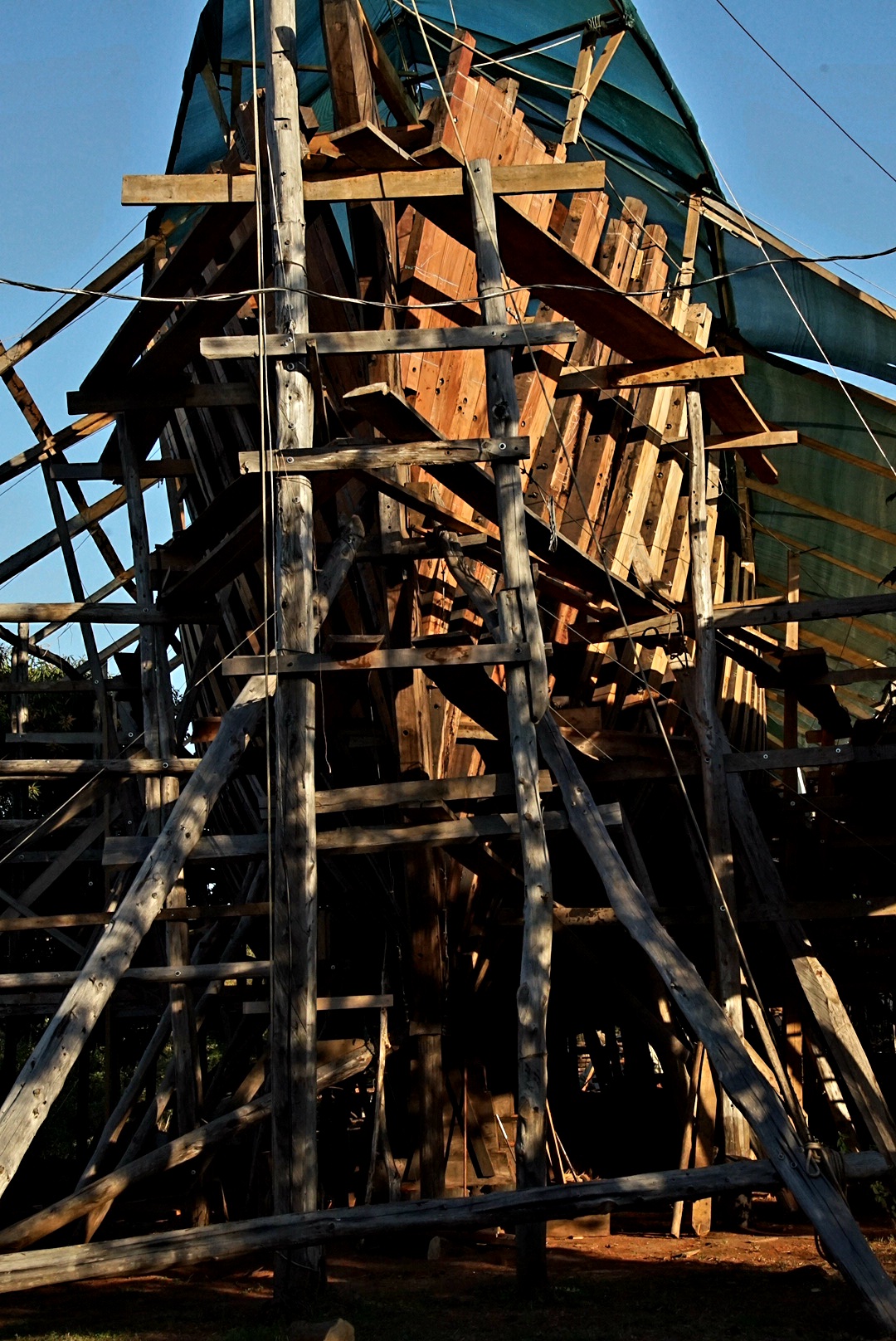
Just before we arrived, we called Danielle, one of the founders of the shipyard to inquire about a good anchorage. She came right out to meet us and brought a few beers to the boat along with a few other shipyard employees.
Little by little more and more „Yardies“, as the shipyard workers are called here, arrived at WASA. I was a little unsure at the beginning, but now I’m almost proud to say that with 13 people we set a new record of beer drinking people on board!!!
As the sun went down, our hunger raised and we headed to the boatyard to grill the fish Sofien and I had caught. It was amazing! It just had been a pipe dream, but we actually caught so well that we could feed 19 people with fresh fish and a few vegetables!
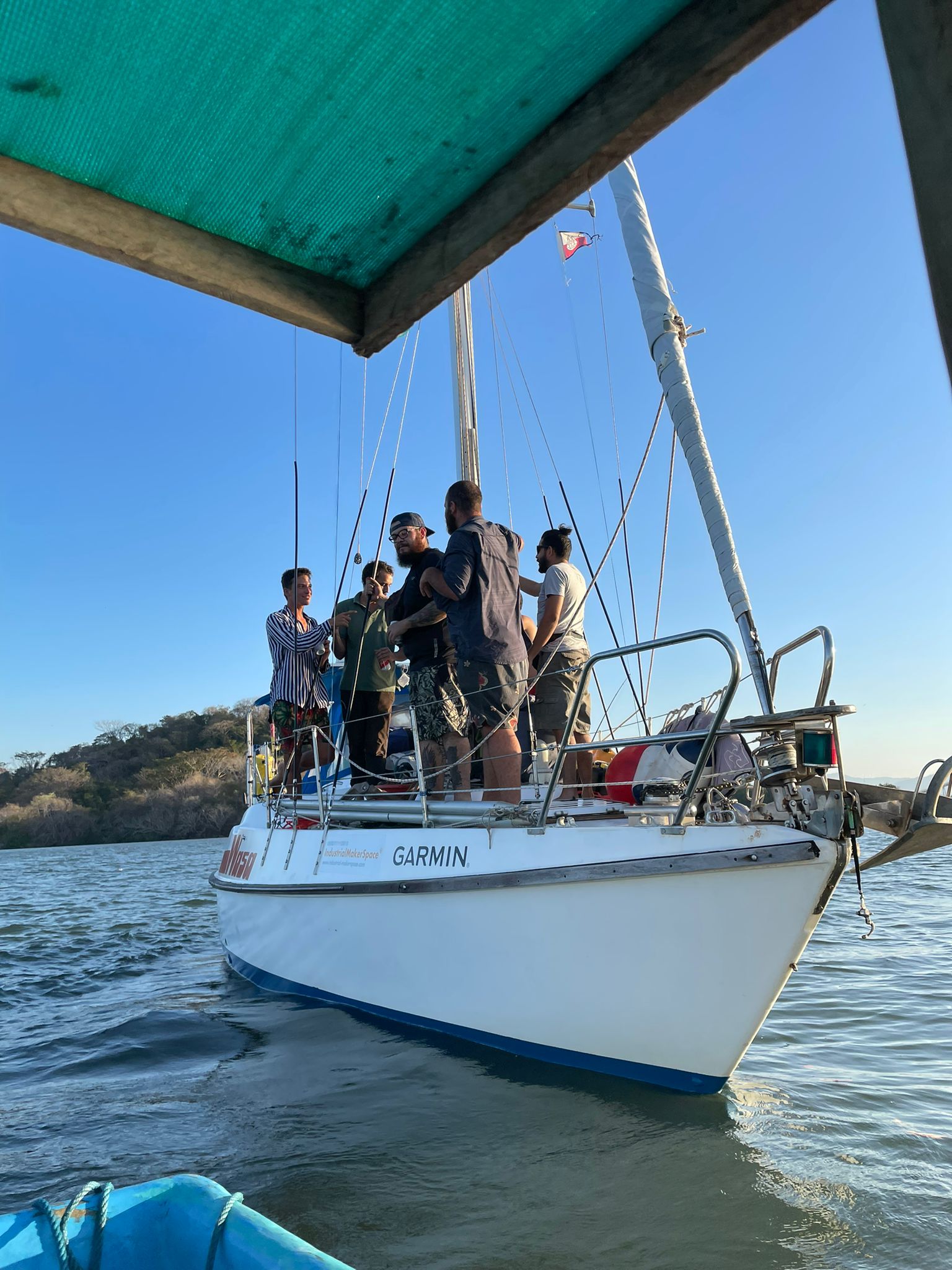
We anchored a good distance away from shore so that my boat would keep enough water underneath the keel even at low tide. The tidal range here is almost three meters and the banks are very shallow.
